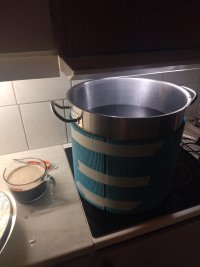Just a quesstion, I have the above mentioned mixed strain starter going now, and in the future I plan on making 2 individual starter worts, collect the yeast, put it in 1dl test vials with glycerol/water solution and keep in the freezer.
Then add one of each to an appropriate size mixed strain starter a few days before brewing, but does co-cultivating 2 yeasts once before pitching suffice to make one of them dominant, or would that require a few generations?
Then add one of each to an appropriate size mixed strain starter a few days before brewing, but does co-cultivating 2 yeasts once before pitching suffice to make one of them dominant, or would that require a few generations?






![Craft A Brew - Safale S-04 Dry Yeast - Fermentis - English Ale Dry Yeast - For English and American Ales and Hard Apple Ciders - Ingredients for Home Brewing - Beer Making Supplies - [1 Pack]](https://m.media-amazon.com/images/I/41fVGNh6JfL._SL500_.jpg)




















































